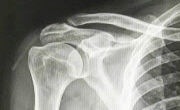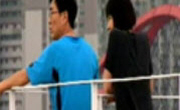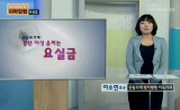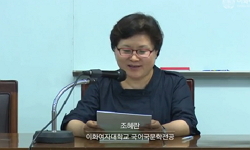In modern society, social changes such as progress in individualism, growth in large cities, information and communication revolution, and the rise of women’s status and autonomy have become conditions that stimulate the spontaneous emergence of si...
http://chineseinput.net/에서 pinyin(병음)방식으로 중국어를 변환할 수 있습니다.
변환된 중국어를 복사하여 사용하시면 됩니다.
- 中文 을 입력하시려면 zhongwen을 입력하시고 space를누르시면됩니다.
- 北京 을 입력하시려면 beijing을 입력하시고 space를 누르시면 됩니다.

홀로 나이 들어가는 삶, 나를 돌아보는 삶 - 김훈의 <강산무진>과 전경린의 <승객>, <합>을 중심으로 = A Life of Living Alone in Middle Age, A Life of Looking Back on Myself – Focusing on Kim Hoon’s <Gangsanmujin> and Jeon Kyung-rin’s <Passenger> and <Hap>
한글로보기https://www.riss.kr/link?id=A108759061
-
저자
박선애 (상명대학교)
- 발행기관
- 학술지명
- 권호사항
-
발행연도
2023
-
작성언어
Korean
-
주제어
중년 ; 개인주의 ; 가족주의 해체 ; 성역할 ; 고립 ; 자아 성찰 ; 홀로서기 ; Middle Age ; individualism ; Dissolution of Familyism ; Gender-Role ; Isolation ; Self-Reflection ; Standing Alone
-
등재정보
KCI등재
-
자료형태
학술저널
-
수록면
181-215(35쪽)
- 제공처
-
0
상세조회 -
0
다운로드
부가정보
다국어 초록 (Multilingual Abstract)
Individuals have no choice but to choose defamilyization and individualization, such as delaying marriage as much as possible, separation, divorce, and avoiding childbirth.
Now, in Korean society, living alone is becoming an increasingly common social phenomenon.
In this paper, in a situation where divorces in their 50s and older continue to increase after 2006, the lives of men and women living alone in the middle age in the works of Kim Hoon and Jeon Kyung-rin were examined. With the rapid change in marriage and family-related values in Korean society leading to middle-aged divorce, the way middle-aged protagonists living alone respond to the transition period of their lives was focused on.
First of all, the middle-aged man in Kim Hoon’s <Gangsanmujin> faces a serious health crisis after isolated living a life where he cannot escape from the existing way of life even after divorce. As a result, the main character in the work was excessively obsessed with the traditional male-centered gender role framework while organizing the rest of his life. In particular, he was spending the last remaining time based on the logic of money that he thought was rational reason all his life. Rather, there was no doubt or reflection on the values of life that he has lived so far. Also, there was no specific action to realize the essence of life called death.
On the other hand, the middle-aged women living alone in Jeon Kyung-rin’s <Passenger> and <Hap> showed a more open and willing attitude to accept diversity. They face various problems with the changed reality of middle age and show internal conflicts, but they have newly expanded themselves at the turning point of their lives. They tried to build a new middle-aged self by establishing new human relationships and self-reflection in living alone in the middle-aged life. They never lost touch with the people around them and newly established their identity as women living alone in middle age.
As a result of examining the lives of middle-aged people living alone in the works of these two writers, there were differences in their lifestyles according to class, gender, and individual values of life.
In the lives of the middle-aged men in these works, the characteristics of family-oriented personalization that reduced the family in form were clearly seen. On the other hand, individual self-realization was considered important in middle-aged women’s lives, and for standing alone in middle age, the life of solidarity with autonomous individuals and communities was discussed.
In modern society, social changes such as progress in individualism, growth in large cities, information and communication revolution, and the rise of women’s status and autonomy have become conditions that stimulate the spontaneous emergence of single-person households.
Individuals have no choice but to choose defamilyization and individualization, such as delaying marriage as much as possible, separation, divorce, and avoiding childbirth.
Now, in Korean society, living alone is becoming an increasingly common social phenomenon.
In this paper, in a situation where divorces in their 50s and older continue to increase after 2006, the lives of men and women living alone in the middle age in the works of Kim Hoon and Jeon Kyung-rin were examined. With the rapid change in marriage and family-related values in Korean society leading to middle-aged divorce, the way middle-aged protagonists living alone respond to the transition period of their lives was focused on.
First of all, the middle-aged man in Kim Hoon’s <Gangsanmujin> faces a serious health crisis after isolated living a life where he cannot escape from the existing way of life even after divorce. As a result, the main character in the work was excessively obsessed with the traditional male-centered gender role framework while organizing the rest of his life. In particular, he was spending the last remaining time based on the logic of money that he thought was rational reason all his life. Rather, there was no doubt or reflection on the values of life that he has lived so far. Also, there was no specific action to realize the essence of life called death.
On the other hand, the middle-aged women living alone in Jeon Kyung-rin’s <Passenger> and <Hap> showed a more open and willing attitude to accept diversity. They face various problems with the changed reality of middle age and show internal conflicts, but they have newly expanded themselves at the turning point of their lives. They tried to build a new middle-aged self by establishing new human relationships and self-reflection in living alone in the middle-aged life. They never lost touch with the people around them and newly established their identity as women living alone in middle age.
As a result of examining the lives of middle-aged people living alone in the works of these two writers, there were differences in their lifestyles according to class, gender, and individual values of life.
In the lives of the middle-aged men in these works, the characteristics of family-oriented personalization that reduced the family in form were clearly seen. On the other hand, individual self-realization was considered important in middle-aged women’s lives, and for standing alone in middle age, the life of solidarity with autonomous individuals and communities was discussed.
참고문헌 (Reference)
1 권혁철 ; 김형용, "홀로 살아야 행복한, 중년 남성의 삶:4050세대 1인 남성 가구의 사회적 관계와 주관적 행복감을 중심으로" 사회과학연구원 24 (24): 267-290, 2017
2 노명우, "혼자 살기와 홀로서기의 사회학적 탐색"
3 노명우, "혼자 산다는 것에 대하여" 사월의 책 2013
4 김정숙, "호명과 탈구의 경계에 선 여성인물 연구-전경린의 단편소설을 중심으로" 한국문학이론과비평학회 7 (7): 208-228, 2003
5 심영덕, "페미니즘 인식의 변화에 따른 전경린 소설 연구 -『천사는 여기 머문다』를 중심으로 -" 한민족어문학회 (87) : 275-308, 2020
6 오혜진, "집 떠난 뒤, ‘고독의 시간’을 지내는 방법: 전경린, 천사는 여기머문다" 자음과모음 2014
7 한경혜, "지금, 중년을 말할 때" 교문사 2012
8 정성호, "중년의 사회학" 살림출판사 2006
9 모윤수 ; 김지현, "중년남성의 성역할 갈등과 중년기 정서적 위기감의 관계에서 친밀감 두려움의 매개효과" 한국여성정책연구원 91 (91): 97-126, 2016
10 김경수, "중년 탐색의 허와 실" (가을) : 2006
1 권혁철 ; 김형용, "홀로 살아야 행복한, 중년 남성의 삶:4050세대 1인 남성 가구의 사회적 관계와 주관적 행복감을 중심으로" 사회과학연구원 24 (24): 267-290, 2017
2 노명우, "혼자 살기와 홀로서기의 사회학적 탐색"
3 노명우, "혼자 산다는 것에 대하여" 사월의 책 2013
4 김정숙, "호명과 탈구의 경계에 선 여성인물 연구-전경린의 단편소설을 중심으로" 한국문학이론과비평학회 7 (7): 208-228, 2003
5 심영덕, "페미니즘 인식의 변화에 따른 전경린 소설 연구 -『천사는 여기 머문다』를 중심으로 -" 한민족어문학회 (87) : 275-308, 2020
6 오혜진, "집 떠난 뒤, ‘고독의 시간’을 지내는 방법: 전경린, 천사는 여기머문다" 자음과모음 2014
7 한경혜, "지금, 중년을 말할 때" 교문사 2012
8 정성호, "중년의 사회학" 살림출판사 2006
9 모윤수 ; 김지현, "중년남성의 성역할 갈등과 중년기 정서적 위기감의 관계에서 친밀감 두려움의 매개효과" 한국여성정책연구원 91 (91): 97-126, 2016
10 김경수, "중년 탐색의 허와 실" (가을) : 2006
11 성혜영, "중년 1인 가구의 사회적 관계와 경제적 노후준비" 한국아동가족복지학회 26 (26): 61-79, 2021
12 박선화, "전경린의 여성성장소설 연구" 한국교원대학교 대학원 2009
13 나선혜, "전경린 소설에 나타난 여성 인물의 정체성 형성 과정 고찰" 현대문학이론학회 (66) : 77-97, 2016
14 윤애경, "전경린 단편소설의 환상성 연구" 배달말학회 (56) : 289-310, 2015
15 송은미, "전경린 단편소설에 나타난 여성 정체성 인식 양상에 관한 연구" 단국대학교 교육대학원 2010
16 통계청, "인구주택총조사에 나타난 1인 가구의 현황 및 특성 보도 자료"
17 김혜영, "유동하는 한국가족 : 1인가구를 중심으로" 한국사회연구소 15 (15): 255-292, 2014
18 황재혁, "오정희 소설연구 : 중년여성의 자아탐색을 중심으로" 아주대학교 교육대학원 2007
19 김광석, "싱글족(1인 가구)의 경제적 특징과 시사점" 654 : 2015
20 김나현, "서울 1인 가구 여성의 삶 연구" 서울시 여성가족재단 2016
21 차미령, "말해질 수 없는 것들을 위하여, 말해지지 않은 것들을 향하여" (여름) : 2006
22 공선옥, "따로 또 같은 리얼리즘" 실천문학 2006
23 박선애, "노년의 고독과 좋은 죽음에 관한 두 시선 - 김기창의 <모나코>와 한승원의 <피플붓다>를 중심으로" 사단법인 한국문학과예술연구소 (35) : 97-150, 2020
24 정여울, "김훈을 넘어선 김훈을 꿈꾸며" 문학동네 2006
25 반영한, "김훈 소설 연구" 고려대학교 교육대학원 2007
26 전경린, "굿바이 R" 문학동네 2022
27 에릭 클라이넨버그, "고잉 솔로 : 싱글턴이 온다" 더퀘스트 2013
28 심진경, "경계에선 남성성-김훈의 소설을 중심으로-" 16 (16): 1257-1278, 2003
29 김훈, "강상무진" 문학동네 2006
30 신수정, "강산무진" 문학동네 2006
31 이명진 ; 최유정 ; 이상수, "1인 가구의 현황과 사회적 함의에 관한 탐색적 연구" 사회과학연구소 27 (27): 229-253, 2014
32 김현미, "1인 가구 여성, 이기적 선택은 있는가?" 서울시 여성가족재단 2016
33 김연옥, "1인 가구 시대의 도래: 특성과 생활실태" 한국가족사회복지학회 (52) : 139-166, 2016
34 백승민, "1인 가구 담론과 인권:2009-2015년 조선일보와 한겨례" 한국사회학회 2016
35 정충모, "1970년대 최일남 소설의 중년남성인물연구" 한국방송통신대학교 2015
동일학술지(권/호) 다른 논문
-
- 사단법인 한국문학과예술연구소
- 이기대
- 2023
- KCI등재
-
<세자매>의 집, 폭력적 시간과 공간의 존재론적 아카이브
- 사단법인 한국문학과예술연구소
- 유진월
- 2023
- KCI등재
-
시조창 가집을 통해 본 지방풍류 - 『무인』을 대상으로
- 사단법인 한국문학과예술연구소
- 김태웅
- 2023
- KCI등재
-
- 사단법인 한국문학과예술연구소
- 이동희
- 2023
- KCI등재




 DBpia
DBpia






